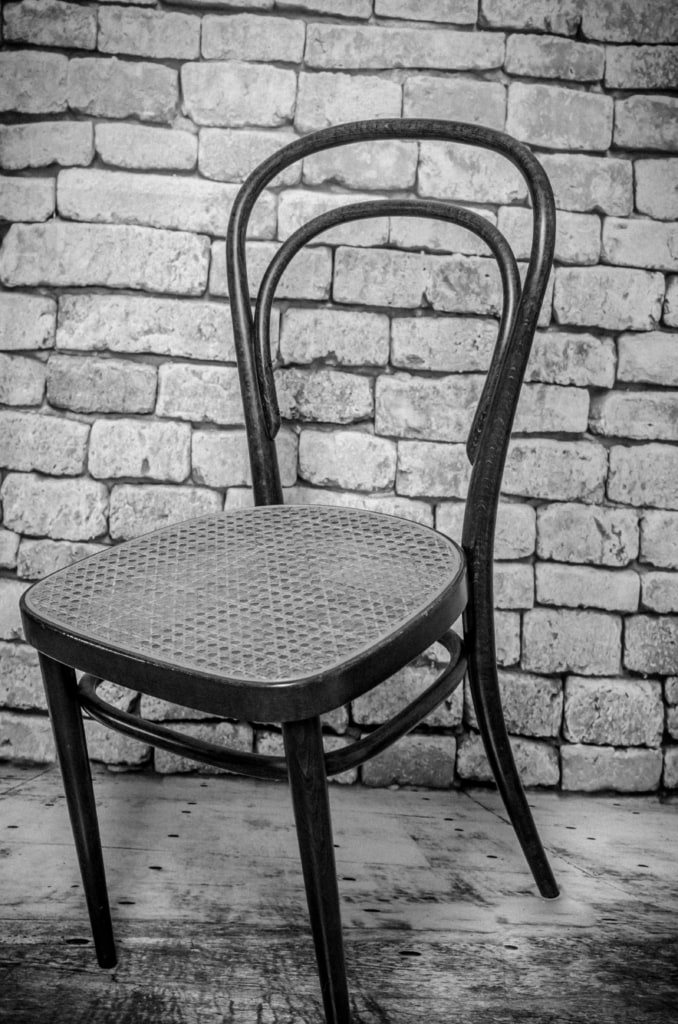February 24, 2024, 11:11 am | Read time: 5 minutes
A piece of furniture couldn’t be simpler: The famous Viennese coffee house chair by Thonet, Chair No. 14, was once the first mass-produced piece of furniture ever. Its clear, minimalist design quickly turned the bentwood chair into a design icon that remains a staple of barista culture today.
It’s likely humanity’s favorite pastime: sitting in a café, chatting, and leisurely sipping a hot beverage. When the scene is framed by an appealing ambiance, it becomes even more relaxing to linger. The fact that this moment still takes place worldwide today is thanks to a German furniture manufacturer from the 19th century. Michael Thonet developed numerous pieces of furniture during his career, but with Chair No. 14, the so-called Viennese coffee house chair (now known as model 214), he created a true classic that not only continues to influence design history but also established the entire coffee culture.
How the Story of Thonet Began
To tell the story of the famous Viennese coffee house chair, one must start with the man who originally conceived the idea for the iconic seating. Michael Thonet was essentially a simple art and construction carpenter. In 1819, he opened his first workshop in Boppard on the Rhine. Using innovative techniques in wood processing, he attempted to create elegant, delicate chairs and gradually made a name for himself—even beyond the region.
Also interesting: The Viennese weave is trendy again
Eventually, Austrian Chancellor Prince Clemens von Metternich took notice of Thonet and persuaded him to move to Vienna. Thonet had the opportunity to contribute to the interior design of the Palais Liechtenstein, further develop his skills, and build a network. In 1849, he founded a company in Vienna, which he renamed Gebrüder Thonet four years later. After all, four of his sons were part of the company from the start, later joined by a fifth, making it a classic family business. Thonet is now in its sixth generation.
Chair No. 14 – A Sensation
Soon, the young company received a significant commission: furnishing the Café Daum on Vienna’s Kohlmarkt. This venue was frequented mainly by aristocrats and the military. In 1850, Thonet designed the coffee house chair No. 4—laying the foundation. In 1859, Thonet introduced Chair No. 14, also known as the Viennese coffee house chair. This model was the first seating furniture that could be almost industrially manufactured thanks to the latest technology, namely bending solid beech wood. It resembled a simple modular system, as the chair could be disassembled into its few components. It could be packed compactly and combined as needed.

Chair No. 14 was thus a sensation: Instead of a bulky construction, it impressed with a delicate design made of bent wood, known as bentwood. It required just four legs, a woven seat, and a backrest formed by only two curved wooden rods, quickly making the Viennese coffee house chair popular.
A Chair for All Life Worlds

The leap into Viennese coffee houses was successful. By 1890, the extraordinary bentwood chairs defined the image of gastronomy. It didn’t take long for people who frequented those cafés and restaurants regularly and sat on the seating furniture for hours to become enamored with it, rave about it, and incorporate it into their work. French painter Henri Matisse featured the Thonet chair in his work “Intérieur au violon.” Writers and intellectuals studied the latest newspaper editions on this very chair. Joseph Strauss’s orchestra also took a seat on it, as did Charlie Chaplin, who featured it in his films. Numerous postcards from the early 20th century documented scenes from European ballrooms, casinos, or grand hotels—always with Thonet chairs as part of the ensemble.

The Barcelona Chair and Its Royal History

How the USM Haller Sideboard Conquered Living Spaces from the Office

The Butterfly Chair and Its Unusual History
From Furniture to Cultural Asset
The Viennese coffee house chair has achieved what few pieces of furniture have: It has become a cultural asset. Wherever people meet and exchange ideas, the Thonet classic is not far away. Over time, it has become an integral part of various situations and scenarios. Whether at home, in a café, restaurant, office, dance bars, concert halls, coworking spaces, hotel lobbies, or other waiting areas—the famous seating furniture brings comfort and style to the ambiance. Chair No. 214 is far more than just a mere furnishing item; it is a timelessly beautiful bentwood piece with collector’s appeal that gradually became an icon.
Also interesting: How the “USM Haller Sideboard” conquered living spaces from the office
The topic of sustainability has also been increasingly addressed over time. The wood for the classic furniture comes from sustainable forestry. Its simple design and timeless aesthetics, combined with high quality, promise a long lifespan. It’s no wonder that the coffee house chair, which has impressively shaped furniture history for more than 160 years, was named the winner of the German Sustainability Award Design in 2021.

